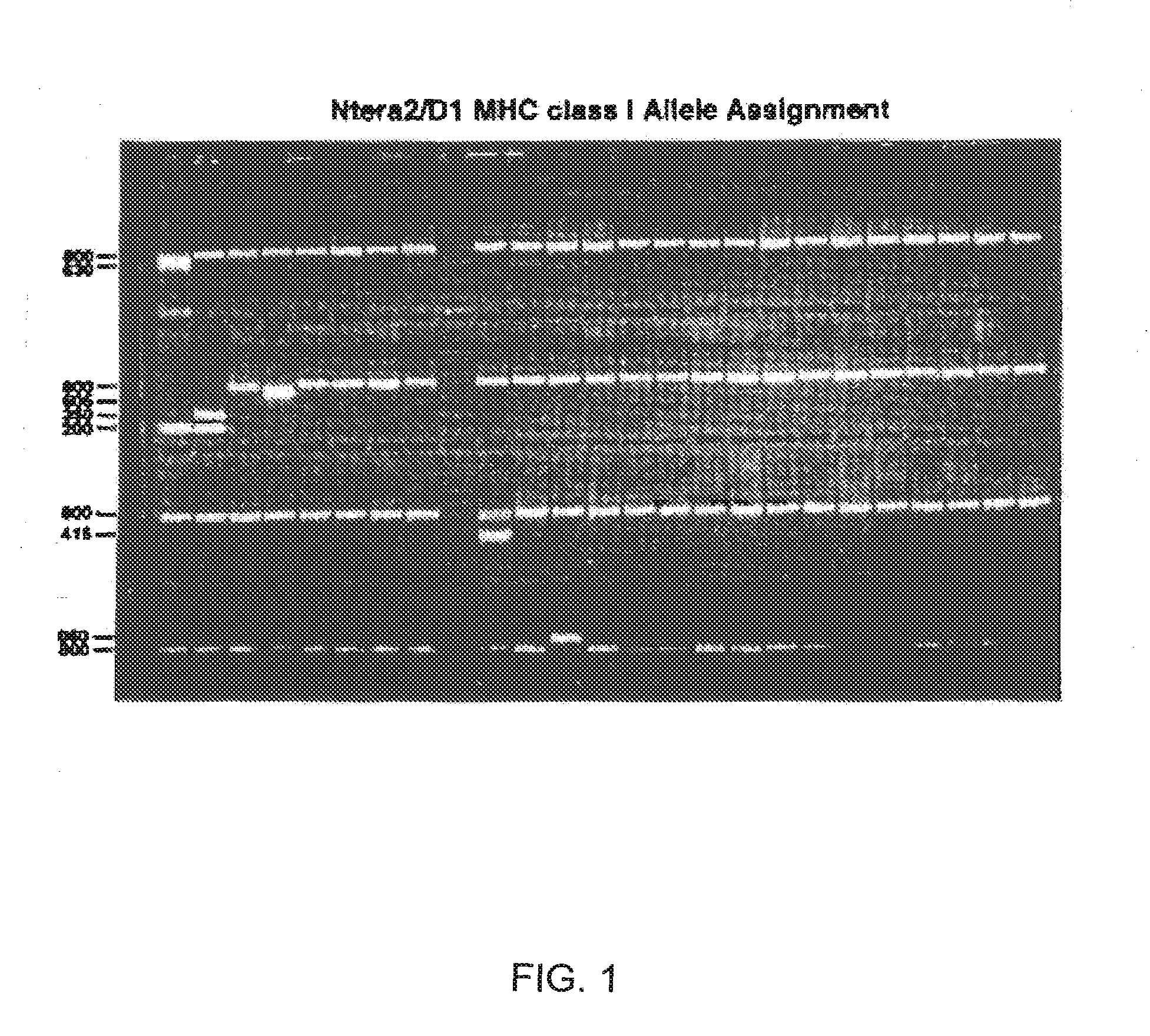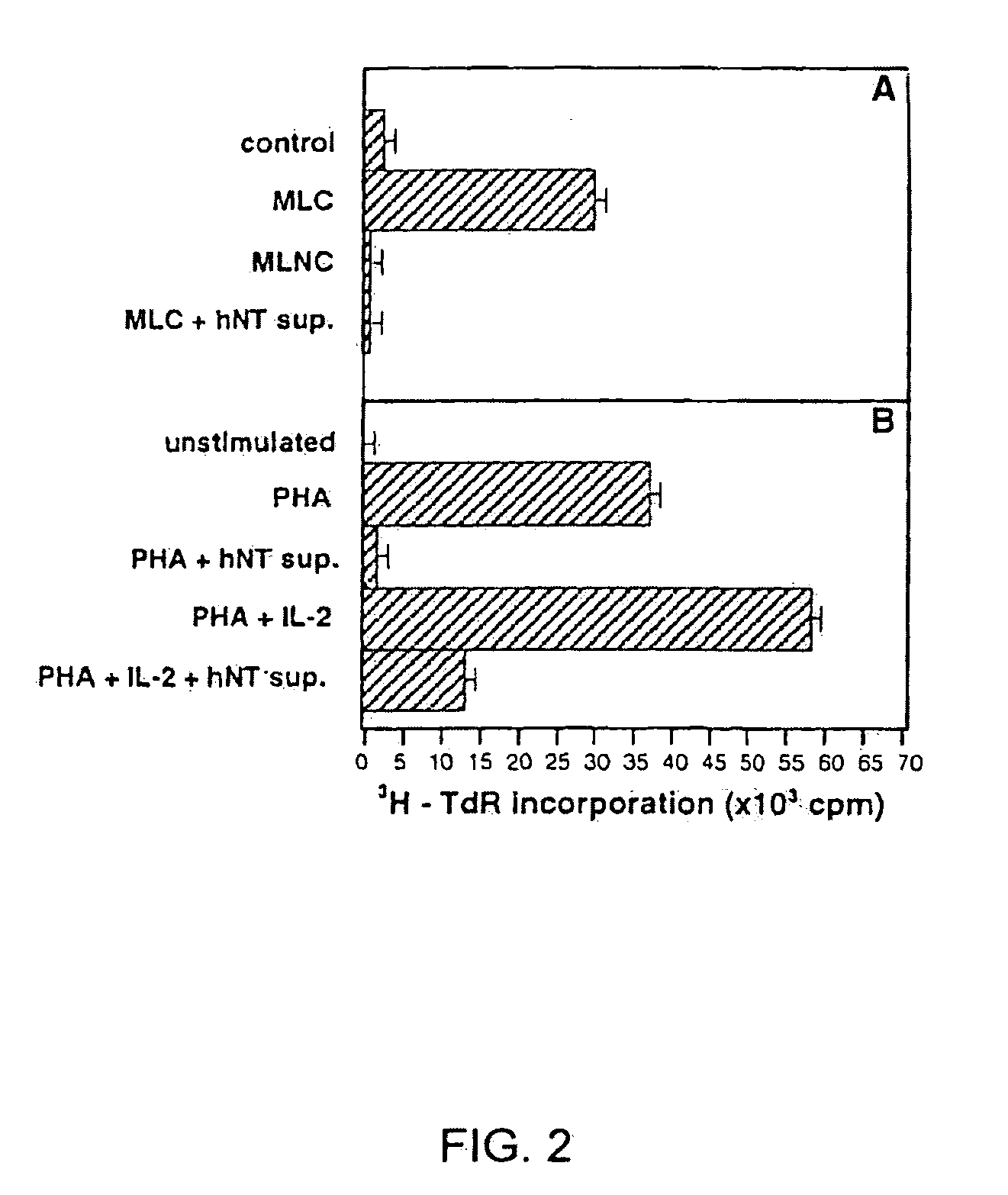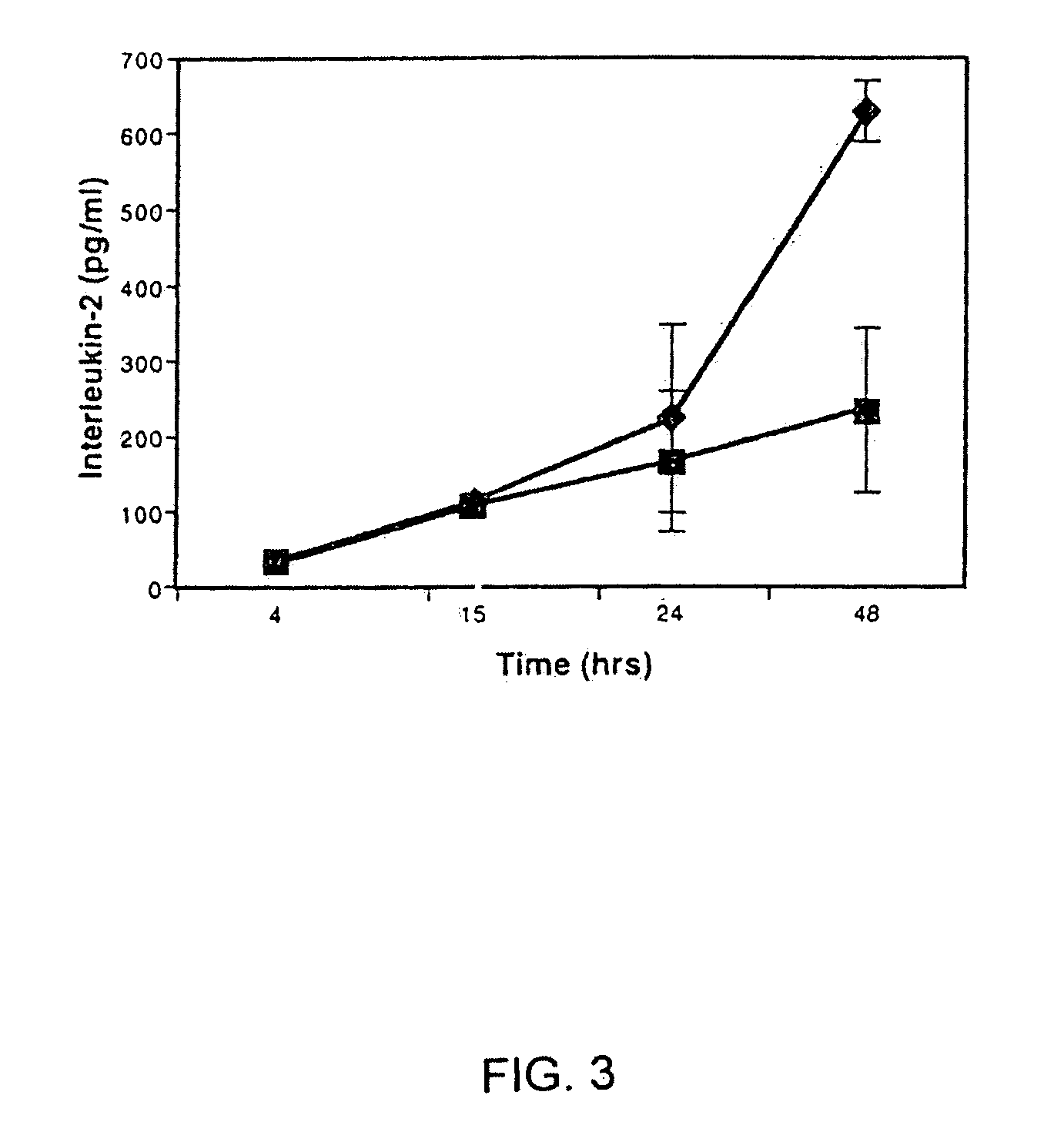Human immunosuppressive protein
a protein and immunosuppression technology, applied in the field of immunosuppression proteins, can solve the problems of limited viability, inability to meet the needs of patients, etc., and achieve the effect of suppressing the proliferation of responders, suppressing the production of t-cell proliferation and il-2, and reducing the viability
- Summary
- Abstract
- Description
- Claims
- Application Information
AI Technical Summary
Benefits of technology
Problems solved by technology
Method used
Image
Examples
example 1
Production of Ntera2 / D1
[0071]Ntera2 / D1 cells (Layton Bioscience, Inc., Sunnyvale, Calif.) were maintained in Dulbecco's minimal essential medium with nutrient mixture F-12 (DMEM / F-12) with 2 mM L-glutamine, 100 U / ml penicillin, 100 μg / ml streptomycin, and 10% (v / v) heat-inactivated fetal bovine serum (FBS) (Life Technologies, Gaithersburg, Md.), and incubated in a 37° C., humidified, 5% CO2 environment.
example 2
Differentiation to hNT Neurons
[0072]Differentiation of Ntera2 / D1 is described in detail by Andrews, 1984 and Pleasure et al., 1992, which are hereby incorporated by reference. Briefly, Ntera2 / D1 (2.times. 106) were treated with 10 μM all-trans retinoic acid (Sigma, St. Louis, Mo.) for 5-6 weeks. Mitotic non-neuronal cells were inhibited with 1 μM cytosine β-D-arabinofuranoside, 10 μM 5-fluoro-2′-deoxyuridine, and 10 μM 1-β-D-ribofuranosyluracil (Sigma) for 1 week. Some retinoic acid-treated Ntera2 / D1 cultures were exposed to 25 Gy γ-irradiation (137Cs) to inhibit non-neuronal cells and were not treated with mitotic inhibitors, to ensure that trace amounts of mitotic inhibitors were not contributing to the immunosuppressive properties of hNT supernatant. Differentiated hNT neurons overlying the mixed cell culture were treated with 0.025% trypsin and 0.01% EDTA, dislodged, and replated at a density of 2−3×106 cells / ml in serum-free Opti-Mem medium (Gibco-BRL), or DMEM / F-12 10% FBS med...
example 3
[0076]Ntera2 / D1 genomic DNA (75-125 ng / μl) was used as template for MHC class I and II analysis by sequence-specific primer polymerase chain reaction (Bunce et al., 1995) in MHC diagnostic plates (Pel-Freez Clinical Systems, Deerbrook Trail, Wis.), and the amplified products analyzed by ethidium bromide stained electrophoresis.
[0077]hNT MHC surface expression was detected using a complement-dependent cytotoxic technique in Terasaki tissue typing trays (One Lambda, Inc., Canoga Park, Calif.). Briefly, 2×106 / ml hNT neurons were reacted with MHC antigen-specific monoclonal antibody (mAb) or known antisera, mixed with rabbit complement, ethidium bromide and acridine orange, and the reaction stopped by hemoglobin-EDTA. Cell viability was scored, and the MHC phenotype determined. At least 2 mAb or 3 overlapping antisera were used to define each MHC antigen.
[0078]The hNT neurons express MHC class I proteins. The amplified products of polymerase chain reactions using...
PUM
| Property | Measurement | Unit |
|---|---|---|
| molecular weight | aaaaa | aaaaa |
| pH | aaaaa | aaaaa |
| pH | aaaaa | aaaaa |
Abstract
Description
Claims
Application Information
 Login to View More
Login to View More - R&D
- Intellectual Property
- Life Sciences
- Materials
- Tech Scout
- Unparalleled Data Quality
- Higher Quality Content
- 60% Fewer Hallucinations
Browse by: Latest US Patents, China's latest patents, Technical Efficacy Thesaurus, Application Domain, Technology Topic, Popular Technical Reports.
© 2025 PatSnap. All rights reserved.Legal|Privacy policy|Modern Slavery Act Transparency Statement|Sitemap|About US| Contact US: help@patsnap.com



